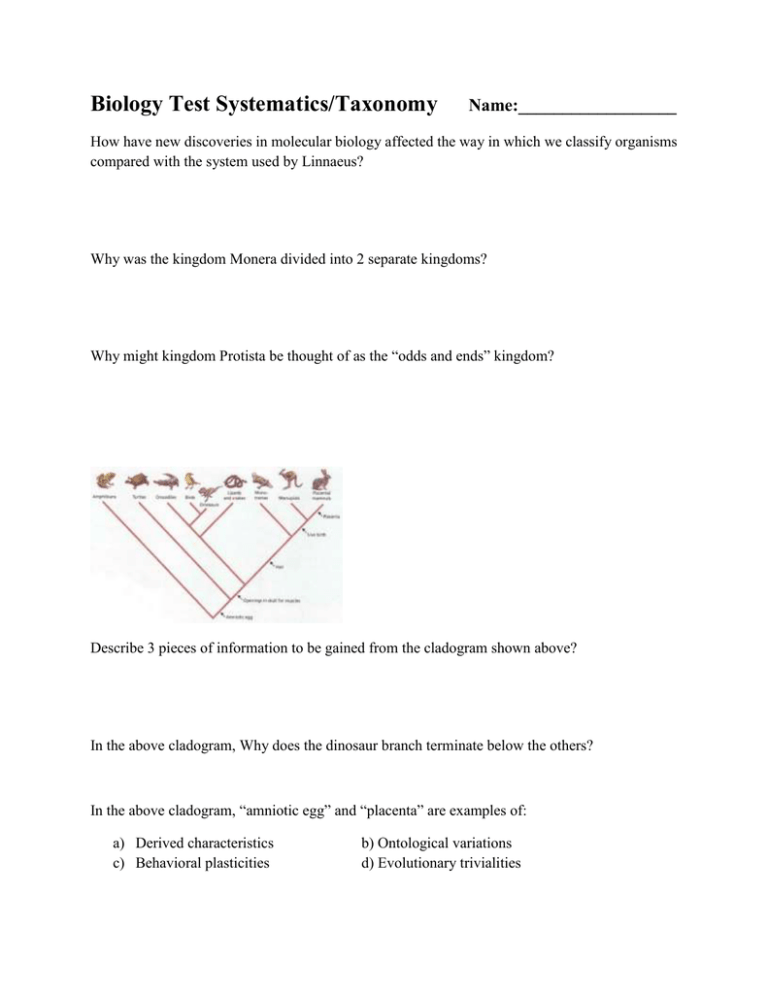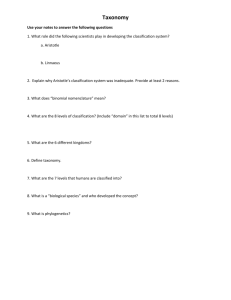Biology Test Systematics/Taxonomy Name:__________________
advertisement

Biology Test Systematics/Taxonomy Name:__________________ How have new discoveries in molecular biology affected the way in which we classify organisms compared with the system used by Linnaeus? Why was the kingdom Monera divided into 2 separate kingdoms? Why might kingdom Protista be thought of as the “odds and ends” kingdom? Describe 3 pieces of information to be gained from the cladogram shown above? In the above cladogram, Why does the dinosaur branch terminate below the others? In the above cladogram, “amniotic egg” and “placenta” are examples of: a) Derived characteristics c) Behavioral plasticities b) Ontological variations d) Evolutionary trivialities Given these characters and Taxa: Slug Catfish Frog Tiger Human Cells Backbone X X X X X X X X X Legs X X X Opposable Thumbs Hair X X X Draw a cladogram showing the evolutionary relationship among the organisms Create a dichotomous key to the following species: Elephant, Frog, Mouse, Turtle, Squirrel: A group of closely related species and the first part of the scientific name in binomial nomenclature is a _______________. A. family B. genus C. class D. order The domain of unicellular prokaryotes that have cell walls containing peptidoglycan is the domain _________________. A. Eubacteria B. Eukarya C. Bacteria D. Archaea The kingdom of multicellular photosynthetic autotrophs that have cell walls containing cellulose is _______________. A. Fungi B. Animalia C. Protista D. Plantae Which of the following is the most specific category of classification? a.Class b.Family c.Order d.Division e.Phylum Which of the following sequences is arranged from broad to more specific? A) kingdom, domain, phylum, class, order, family, genus, species B) kingdom, phylum, class, order, domain, family, genus, species C) domain, kingdom, phylum, class, order, family, genus, species D) domain, kingdom, phylum, class, family, order, genus, species Animalia can be distinguished from Plantae because A) animals are heterotrophic. B) animal cells have cell walls. C) plants are prokaryotic. D) plants obtain nutrients by absorption. Currently taxonomists use 3 domains, name them: Currently taxonomists use 6 kingdoms, name them, list their cell type, defining cellular structures, cellularity (numbers of cells), and their modes of nutrition What was the author’s main point in the article “what, if anything, is a zebra?”. Why, according to Gould, is there no such thing as a fish?



